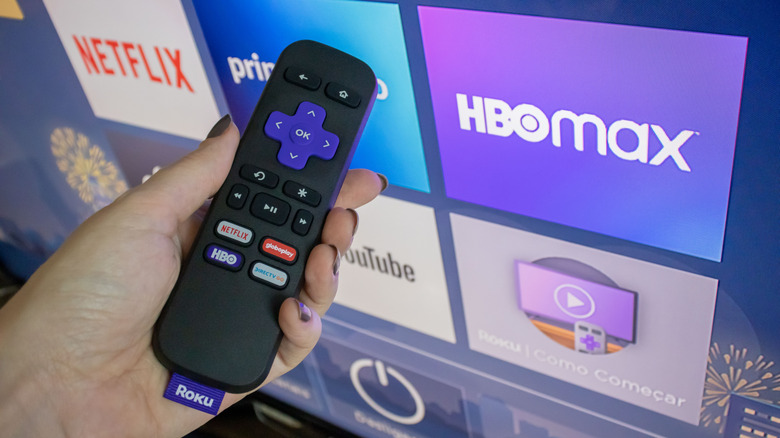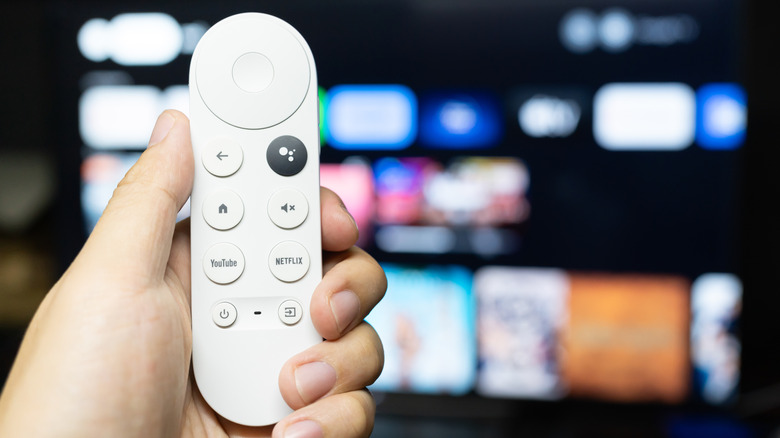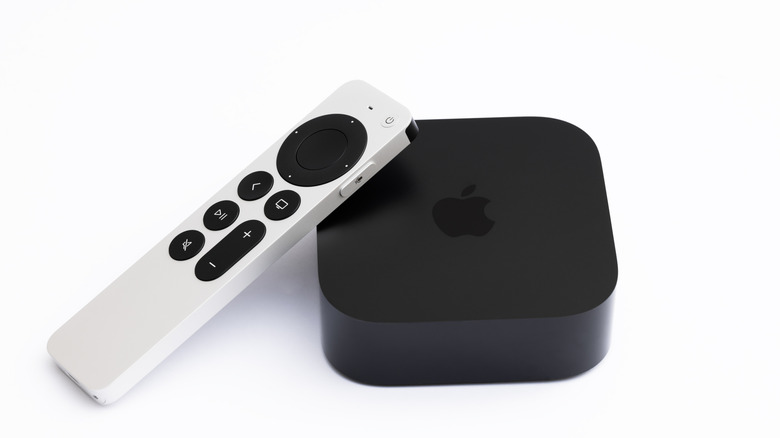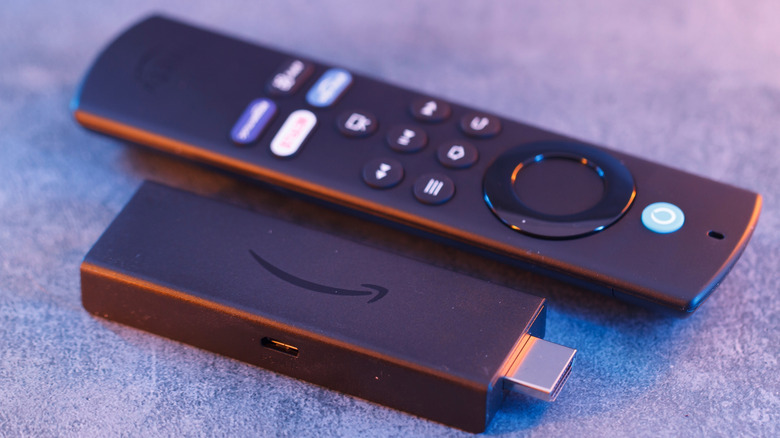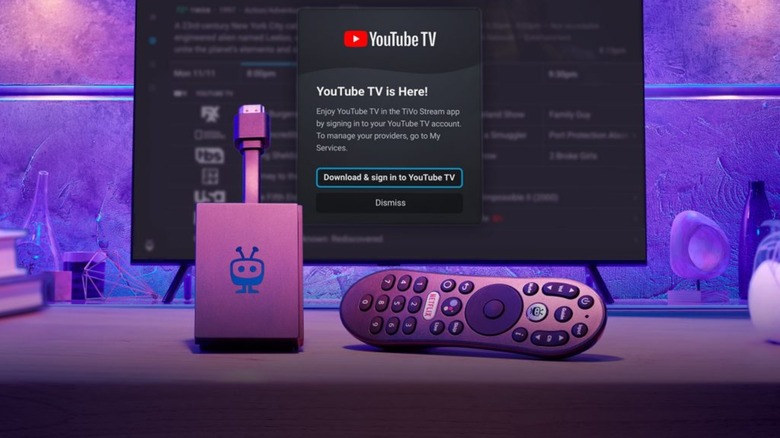4 Roku Alternatives For Streaming Movies And TV Shows
We may receive a commission on purchases made from links.
Times have changed significantly since millennials were children, when their parents had to pay for cable to watch all their favorite shows. If they wanted movies too, they had to pay extra and then on top of that, if they had to choose between multiple bundles. Some of those bundles had the HBO and Cinemax channels but not Showtime, while another bundle had Showtime and Starz but not HBO and Cinemax. It was a headache. Then Netflix started up its streaming service and not only minimized the headache, offering a plethora of favorite TV shows and movies, but it was also cheaper than any cable TV bundle. Thus started the cord-cutting movement and the proliferation of streaming platforms.
To accommodate the wide variety of streaming platforms, including Hulu, Netflix, Disney+, there are smart TVs and media players like Roku's devices that allow you to download any of the more popular services. With Roku, you can choose the Roku Stick– if you already have a TV — or a Roku TV if you're in the market for a new one. With any Roku device you can access Apple TV, Netflix, Hulu, and the other mainstream streaming platforms. Moreover, Roku is seen as a budget-friendly option, with a Roku Stick 4K coming in at around $42 and the Roku HD Express being under $20. If you're in the market for a streaming device with a smooth UI or one that meshes with an ecosystem you're already a part of, there are some alternatives out there.
Google TV has evolved beyond the Chromecast
Google TV and Roku have a lot of similarities, but Google TV is a little more robust, letting Google users connect to their Google account where they keep videos and photos stored, letting users view more than Netflix on their TV. It's one aspect that makes being a part of the Google ecosystem worth it. Google has a couple options available for anyone looking to stream their favorite media, including smart TVs and the Google TV Streamer– which Google killed the Chromecast in favor of. The Google TV Streamer is similar to the old Chromecast, except instead of hanging from the TV like the old dongle design, it sits on a flat surface.
It still connects to the TV via HDMI, has a power cord and functions like a Chromecast. As long as your other devices — computer, phone, and tablet — are on the same network as the Google TV Streamer, you can cast whatever you're watching to the TV it's plugged into. Even the smart TVs running on GoogleOS come with this feature.
While Roku remotes do support voice commands, the Google remote has the advantage of Google's assistant, which has been around for years and isn't as limited. Google TV also supports over 10,000 apps with the Google Play Store, including some Android exclusive apps. A Google TV Streamer starts at $99 while a smart TV with Google TV can be anywhere between $150 and $700, depending on the brand and size of the TV.
Apple TV 4K is a premium option
Despite its name, the Apple TV isn't actually a TV. It's a media streaming device that looks like a little black box, and it comes at a higher premium than its competitors. Its biggest drawback is Apple not including an HDMI or USB-C cable with the Apple TV. It comes with some features hard to find on other similar products, including the ability to enjoy a move or TV show along with a friend via FaceTime. Additionally, you can pair up to two pairs of AirPods to the Apple TV, preventing any audio from coming out of the TV. It's perfect for late night viewing when you don't want to disturb others when they're sleeping.
If you're already a part of the Apple ecosystem, this is a solid choice since you can view content on your various devices. You can set up a screensaver on your TV to stream some of your favorite photos from your iCloud. Moreover, the Siri Remote is locatable with the iPhone. Buying an Apple TV 4K gains you three free months to Apple TV+, Apple's response to Netflix.
Unfortunately, its selection of movies and shows aren't as robust as its competitors, so three free months might be trivial to you. The Apple TV doubles as a smart home hub as long as you have a HomeKit or Matter-enabled device. Depending on whether you choose the Apple TV 4K with Wi-Fi only or the Wi-Fi + Ethernet option, an Apple TV 4K is between $129 and $149 from the Apple website.
Amazon Fire TV has several options for consumers
If you're an Amazon Prime subscriber, then Amazon Fire TVs are an appealing option. Just like Google, Amazon manufactures a few options for streaming. There's the ever-popular $35 Fire Stick HD, the Fire TV Cube (3rd gen), Fire Stick 4K Max (2nd gen) for $60, and Fire TVs. All function similarly, but the Amazon Fire Stick 4K Max and HD are nice choices if you already own a TV. If you own a Fire TV device, an Alexa, and a smart camera, Fire TV devices will let you set up picture-in-picture so you can check on your Ring Doorbell footage or other security feeds as well as monitor some smart home devices. Amazon doubled the Fire Stick's storage capacity since its last iteration, boosting it to 16 GB.
The biggest drawback with a Fire TV device is its relentless marketing. You'll be bombarded with Amazon ads from the moment you turn on the TV. Luckily these ads are in the background and don't force you to click on anything, but they're there and can be a bit of a drag. The remote uses Amazon's Alexa when you know exactly what you want and will scour all the different apps you have installed to find it.
If you're not on a budget and want something a little more all-inclusive, there's the Fire TV Cube for $140, which is like a combination of the Fire Stick and an Echo speaker. Instead of pressing a button to access Alexa — like you do with the remote — the Cube is completely hands-free and responds to voice commands.
Tivo still exists
If you're old enough, you remember when Tivo revolutionized the TV-viewing experience, bringing pause and rewind functionality to live TV as well as letting you record your favorite media without a VHS player. This changed everything by giving viewers a way to avoid those pesky commercials. However, the emergence of streaming platforms changed everything once again, making Tivo and DVR technology old news. Tivo still exists, though, with the Tivo Stream 4K. It's a dongle design like the old Chromecast that utilizes Android TV. This gives you access to the Google Play Store and all the major streaming apps.
When you have the Tivo Stream 4K, you get access to Tivo Plus, which provides a bevvy of free content through apps like Tubi, Pluto TV, USA Today, and others all in one spot. Google users will be somewhat familiar with Tivo's features since it uses Android TV, but it also uses the Google Assistant for voice commands. The voice function is a little more limited than other similar devices, but it gets the job done. If you're on a budget but not a fan of Roku, the Tivo Stream 4K is around $40.
